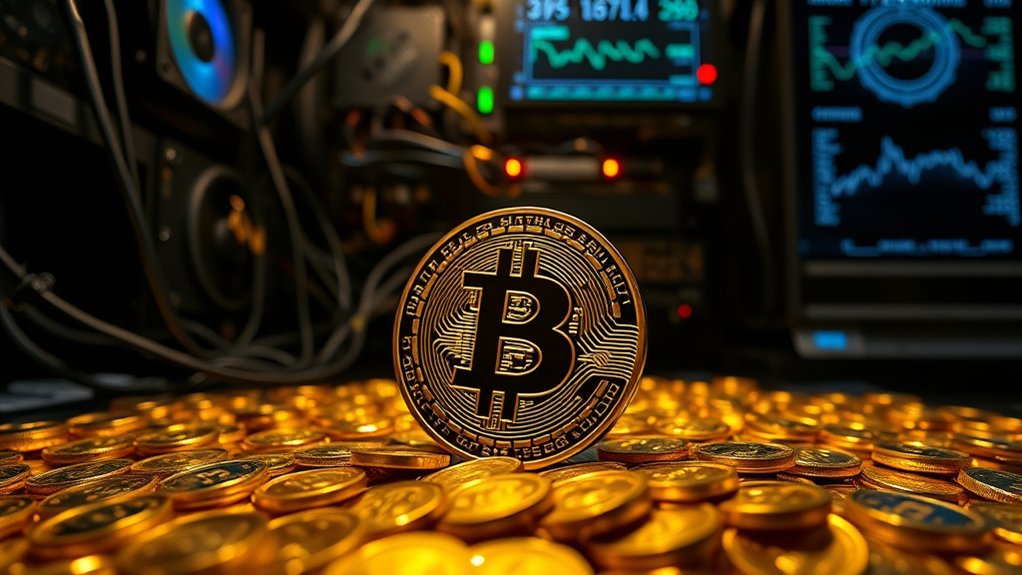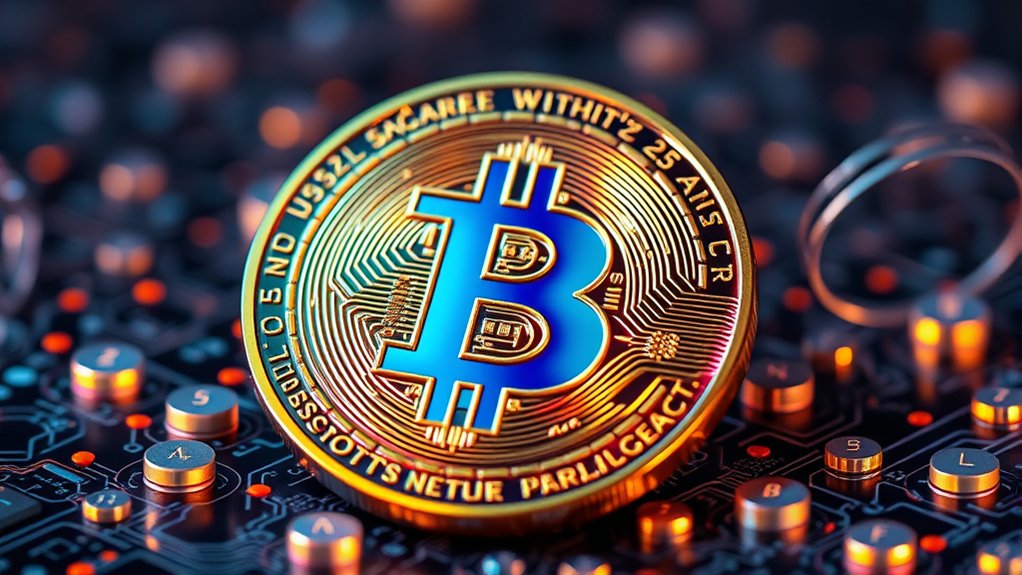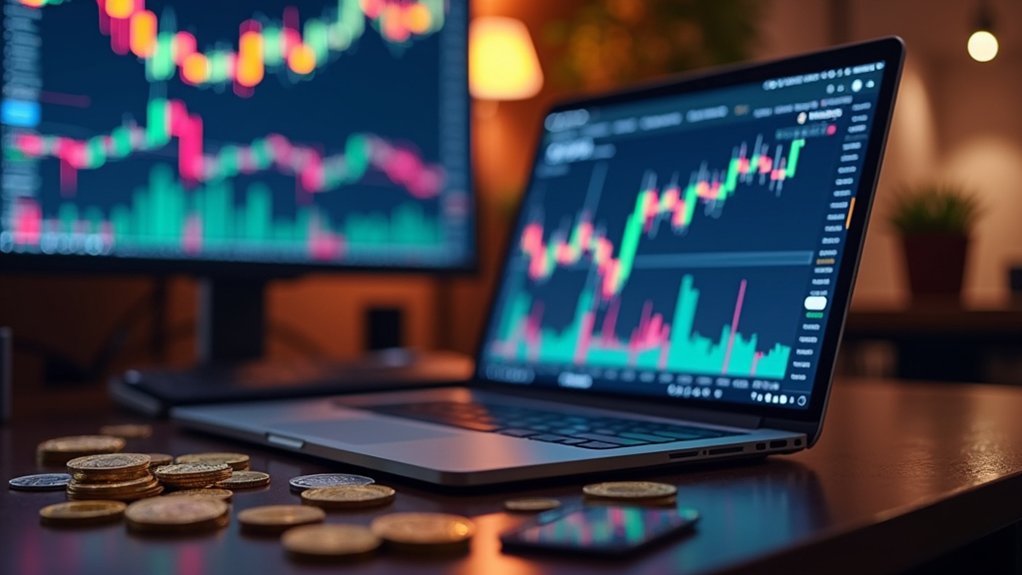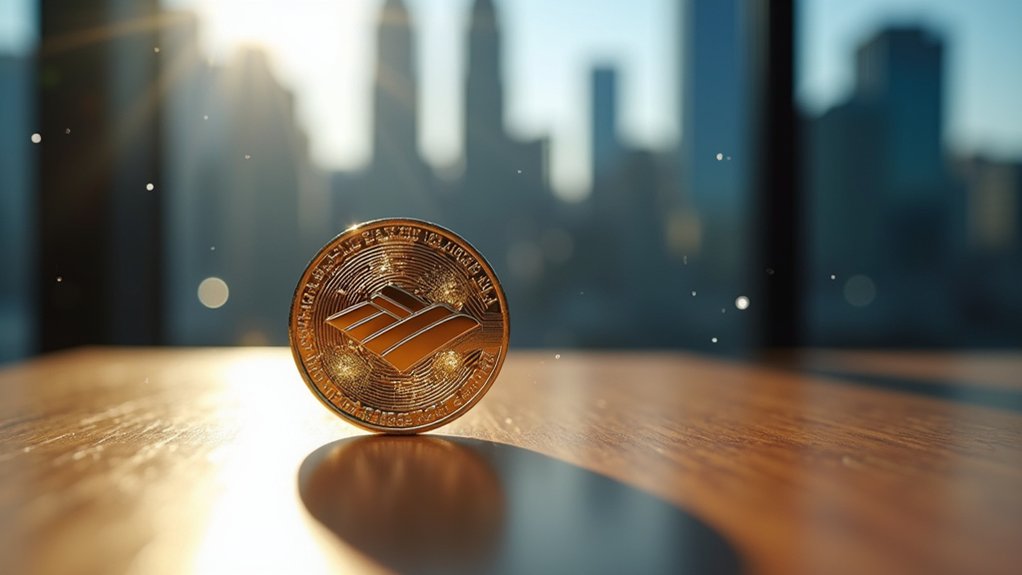When all Bitcoins are mined, things get real interesting. Miners won’t just get shiny new coins; they’ll have to rely on transaction fees instead. Yikes! This could lead to issues with network security and fewer miners sticking around. As fees hike up, miners might bail if profits dwindle. The balance of Bitcoin’s ecosystem hangs by a thread. It’s a wild ride, right? But stick around, there’s more on how this affects everyone’s favorite cryptocurrency.
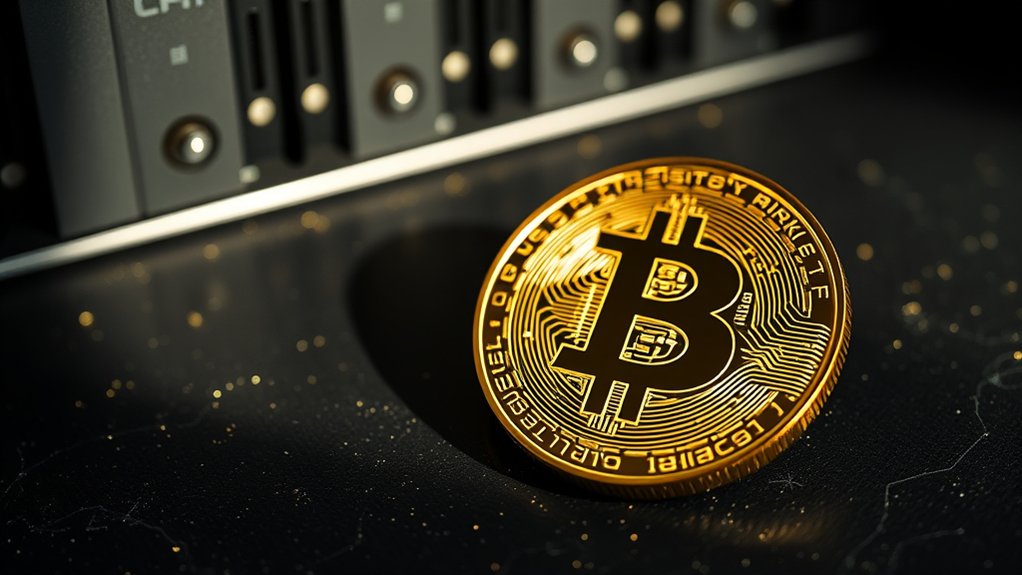
When it comes to Bitcoin, the clock is ticking—sort of. With a maximum supply capped at about 21 million coins, the race is on. Right now, over 19.8 million Bitcoins are already out there, leaving a measly 1.5 million left to mine. Once these last few coins are dug up, that’s it—no more new Bitcoins. Talk about a finite resource! This scarcity is designed to pump up demand and value, much like gold.
The Bitcoin countdown is on—only 1.5 million coins left to mine before the limit kicks in!
And just like in a game, every four years, the rewards for miners get sliced in half. It’s called the halving mechanism, and it’s meant to keep inflation in check. Can you say “supply and demand”?
Now, let’s get into the nitty-gritty of mining. It’s not just about sitting around waiting for coins to fall from the sky. Miners are busy verifying transactions, adding them to the blockchain. They earn block rewards—new Bitcoins—as their prize for the work. Bitcoin mining is the process of validating transactions and adding them to the blockchain. Interestingly, as of now, 19,277,981 BTC have been mined, reflecting the urgency for miners to continue their operations. The halving process is programmed into the Bitcoin protocol to ensure a finite supply of 21 million coins.
But here’s the kicker: once all Bitcoins are mined, miners will be left relying on transaction fees alone. Good luck making a living, right? If those fees don’t cut it, network security could take a nosedive.
But hey, don’t panic just yet. Historically, those halving events have led to price spikes, which help offset dwindling rewards. Efficiency is key, so miners are constantly upgrading their gear to stay ahead.
As for the network’s security post-mining? It’s all about those fees. If transaction fees are high enough, miners might just stick around. Bitcoin’s algorithm is designed to keep things profitable for dedicated miners, adjusting the difficulty as necessary.
Frequently Asked Questions
How Many Bitcoins Will Ever Exist in Total?
A grand total of 21 million Bitcoins will ever exist. Yep, that’s it. No more, no less. This limit is hard-coded into the Bitcoin protocol, so good luck trying to print more.
As of now, over 19 million are already out there, leaving only 1.5 million to be mined. Scarcity is the name of the game here. As demand rises, that finite supply might just make Bitcoin even more valuable.
What Will Miners Do After All Bitcoins Are Mined?
After all Bitcoins are mined, miners face a reality check.
No more block rewards. Just transaction fees. Yup, that’s it. They’ll keep the network secure, but their profits? Well, they’ll rely on fees, which might spike.
If you thought mining was a gold rush, think again. It’s more like a penny scramble.
With tech advances and more users, maybe they’ll survive. Or maybe they’ll just need a new hobby. Who knows?
Can Bitcoin Be Mined Again in the Future?
Can Bitcoin be mined again in the future? Nope! Once all 21 million bitcoins are out there, that’s it. No magic wand to conjure more.
Sure, miners can still process transactions and rake in fees, but that’s their new gig. With fewer coins, fees might skyrocket.
How Does Bitcoin Halving Affect Mining Rewards?
Bitcoin halving is a big deal. Every four years, the block reward, which is the juicy incentive for miners, gets sliced in half.
Imagine going from 12 donuts to 6—pretty rough, right? This cuts the supply of new Bitcoins, making them scarcer.
Of course, miners might freak out about profits dropping, but hey, past halvings usually sent prices soaring.
What Happens to Transaction Fees After All Bitcoins Are Mined?
After all bitcoins are mined, transaction fees will take center stage.
Yes, fees will be the lifeblood for miners. Higher demand? Expect fees to climb.
And guess what? Sellers might just hold the power over prices. The network still needs miners to keep things running smoothly.
So, to summarize, while miners sweat over profit, users might start sweating over costs.
Welcome to the future of Bitcoin, where fees rule the roost!
